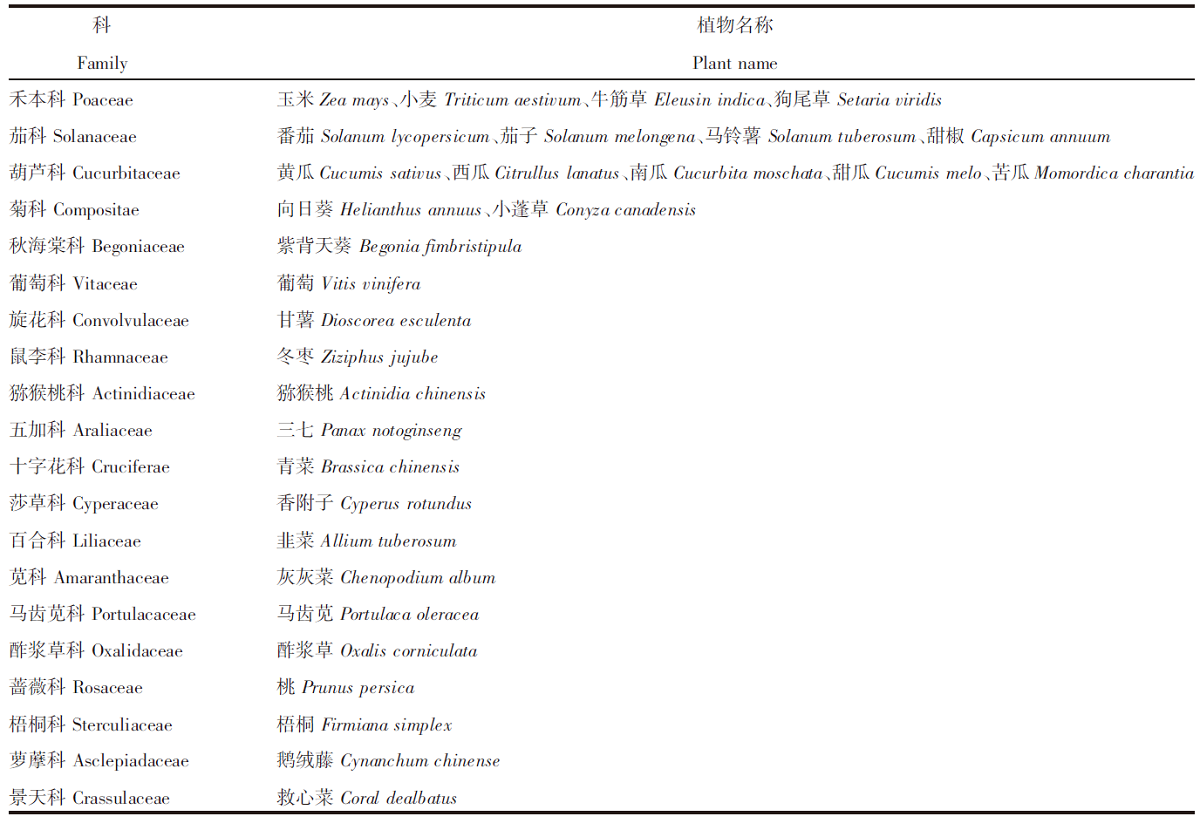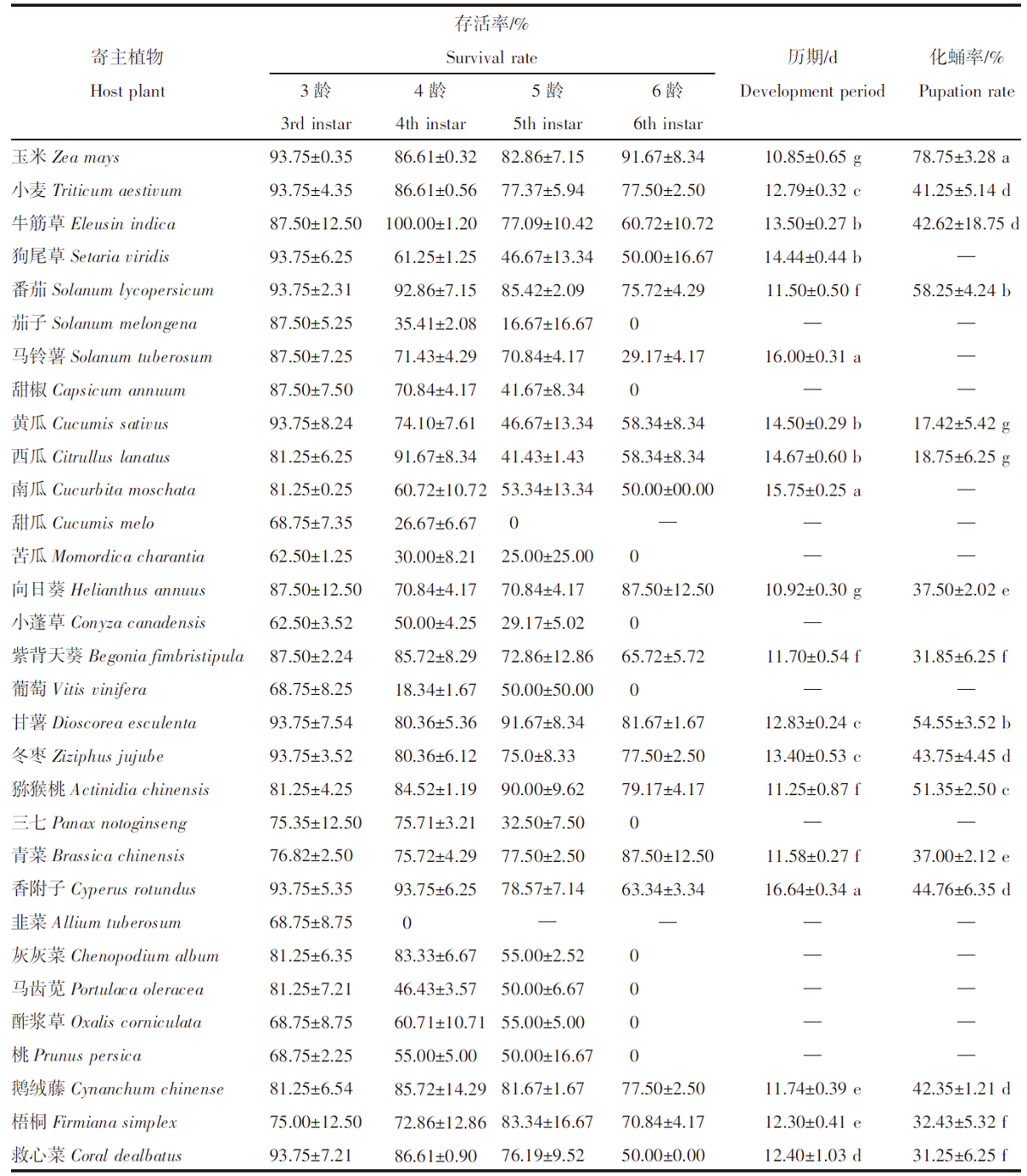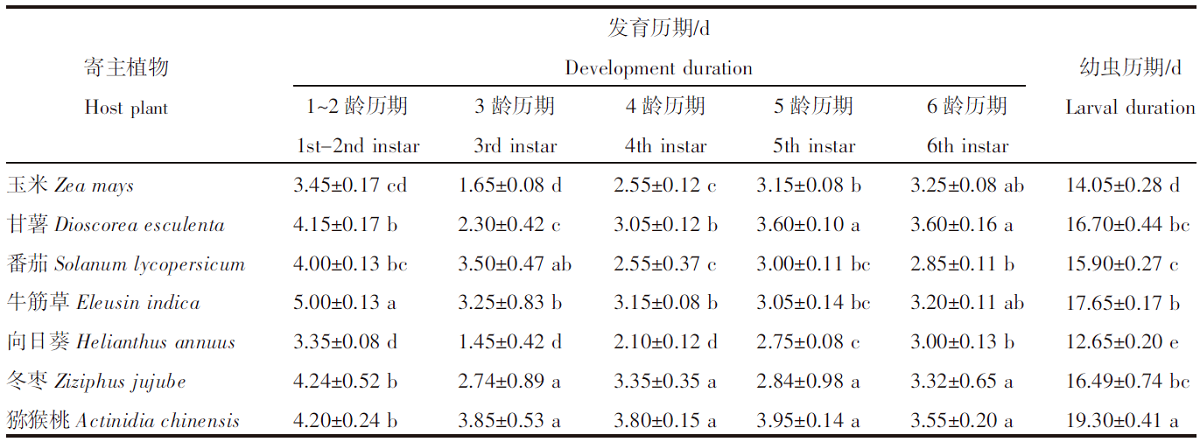| [1] |
TODD E L, POOLE R W. Keys and illustrations for the armyworm moths of the noctuid genus Spodoptera Guenée from the western hemisphere[J]. Annals of the Entomological Society of America, 1980, 73(6):722-738.
doi: 10.1093/aesa/73.6.722
|
| [2] |
MONTEZANO D G, SPECHT A, SOSA-GÓMEZ D R, et al. Host plants of Spodoptera frugiperda(Lepidoptera:Noctuidae) in the Americas[J]. African Entomology, 2018, 26(2):286-300.
doi: 10.4001/003.026.0286
|
| [3] |
吴秋琳, 姜玉英, 吴孔明. 草地贪夜蛾缅甸虫源迁入中国的路径分析[J]. 植物保护, 2019, 45(2):1-6.
|
| [4] |
梁沛, 谷少华, 张雷, 等. 我国草地贪夜蛾的生物学、生态学和防治研究概况与展望[J]. 昆虫学报, 2020, 63(5):624-638.
|
| [5] |
李国平, 刘彬, 张大明, 等. 黄淮海夏玉米区草地贪夜蛾为害籽粒玉米的产量损失与防治阈值[J]. 植物保护学报, 2022, 49(5):1472-1481.
|
| [6] |
DUMAS P, LEGEAI F, LEMAITRE C, et al. Spodoptera frugiperda(Lepidoptera:Noctuidae) host-plant variants:Two host strains or two distinct species?[J]. Genetica, 2015, 143(3):305-316.
doi: 10.1007/s10709-015-9829-2
|
| [7] |
翟颖妍, 袁冬贞, 赵世磊, 等. 基于分子标记的入侵陕西草地贪夜蛾种群生物型分析[J]. 环境昆虫学报, 2022, 44(4):784-791.
|
| [8] |
董松, 卢增斌, 李丽莉, 等. 入侵害虫草地贪夜蛾取食七种食物的种群生命表[J]. 植物保护学报, 2022, 49(2):612-619.
|
| [9] |
徐丽娜, 胡本进, 苏卫华, 等. 安徽发现草地贪夜蛾为害早播小麦[J]. 植物保护, 2019, 45(6):87-89.
|
| [10] |
赵猛, 杨建国, 王振营, 等. 山东发现草地贪夜蛾为害马铃薯[J]. 植物保护, 2019, 45(6):84-86.
|
| [11] |
李傲梅, 谭宏伟, 魏吉利, 等. 草地贪夜蛾在甘蔗上的发生及防治措施[J]. 植物保护学报, 2020, 47(4):735-739.
|
| [12] |
周利利, 郑鹏华, 王仪春, 等. 草地贪夜蛾幼虫取食西瓜果皮可正常羽化[J]. 中国植保导刊, 2020, 40(3):45-46.
|
| [13] |
孙晓玲, 陈成聪, 李宁, 等. 草地贪夜蛾有转移危害茶树的可能[J]. 茶叶科学, 2020, 40(1):105-112.
|
| [14] |
雷虹. 陕西省夏玉米田杂草发生及防治策略[J]. 杂草科学, 2002, 20(2):31-33.
|
| [15] |
房敏, 姚领, 唐庆峰, 等. 草地贪夜蛾对主要杂草的取食适应性[J]. 植物保护学报, 2020, 47(4):1055-1061.
|
| [16] |
姚领, 房敏, 李晓萌, 等. 草地贪夜蛾对三种杂草的产卵和取食选择性[J]. 植物保护学报, 2020, 46(4):181-184.
|
| [17] |
王卫东, 曹旭. 陕西省主要粮食作物种植结构时空变化特征分析[J]. 中国农业资源与区划, 2020, 41(9):155-162.
|
| [18] |
余正军, 范晓培, 王清文, 等. 2019年草地贪夜蛾在陕西省汉中市的发生为害情况调查[J]. 植物保护, 2020, 46(6):223-227.
|
| [19] |
郭线茹, 李为争, 董钧锋, 等. 植食性昆虫寄主植物选择假说述介[J]. 应用昆虫学报, 2021, 58(6):1245-1256.
|
| [20] |
黄至畅, 张政兵, 吴明峰, 等. 草地贪夜蛾对湖南省主要作物的产卵与取食偏向性[J]. 中国植保导刊, 2022, 42(11):5-8.
|
| [21] |
张雨, 郑人文, 姚领, 等. 取食不同寄主的草地贪夜蛾肠道微生物多样性分析[J]. 植物保护学报, 2022, 49(6):1712-1723.
|
| [22] |
周济铭, 赵晓苗. 陕西关中灌区夏玉米不同播种方式产量及效益分析[J]. 陕西农业科学, 2019, 65(4):64-66.
|
| [23] |
杨林, 赵建兴, 孙建阁, 等. 陕西小麦玉米连作绿色高效超吨栽培技术[J]. 基层农技推广, 2020, 8(9):121-123.
|
| [24] |
廖惠敏, 郭烨姗, 黄子岸, 等. 饲料喂养方法评估草地贪夜蛾对玉米田多种植物的适应性[J]. 热带作物学报, 2022, 43(12):2496-2506.
|
| [25] |
曹雯星. 草地贪夜蛾对不同寄主植物的适应性研究[D]. 成都: 四川农业大学, 2022.
|








